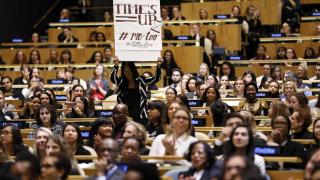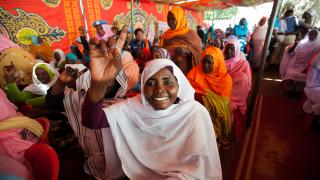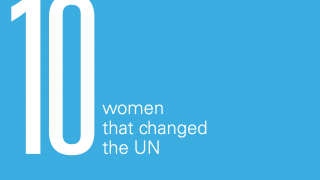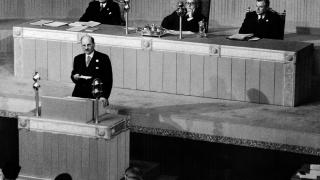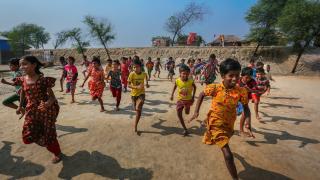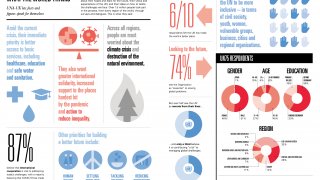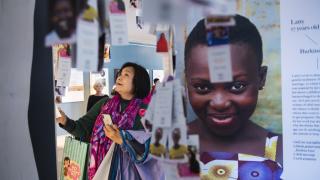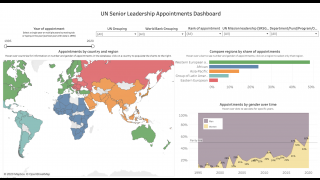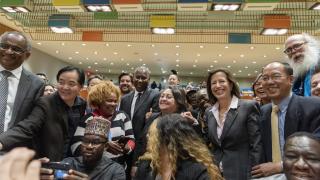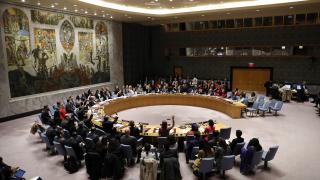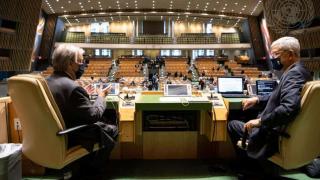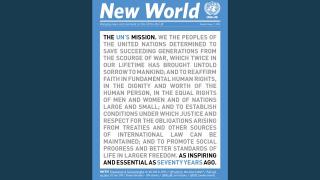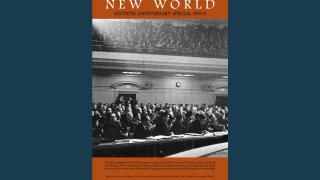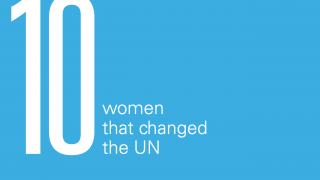
After 75 years, the United Nations is yet to have a female Secretary-General. Only four women have served as President of the General Assembly – a position usually elected every year. And the newly-appointed UK and US Ambassadors to the UN – Barbara Woodward and Linda Thomas-Greenfield – bring the total number of female representatives to have ever served on the Security Council up to just 23, from the hundreds since 1945.
It is perhaps no surprise, therefore, that we often fall into the trap of “great man history” when reflecting on the UN’s seven-and-a-half decades. We are still prone to eulogising a stereotypically masculine style of leadership, making heroes of the (generally white) men who broke the rules but got results. Meanwhile the women – many of whom were held to a higher standard than their male counterparts, and had to be more effective and more creative – are less likely to have books and films made about them.
In this feature, Bryony Pike puts a spotlight on ten women who have shaped the United Nations.
1.
A leader of India’s independ- ence movement (thrice imprisoned by the British), VL Pandit headed India’s delegation to the UN for its first 12 years. In 1953, she became the first woman President of the General Assembly. Her strong influence on the General Assembly was key in transforming the balance of power in the early UN towards newly independent states and placing decolonisation at the heart of the Organization’s agenda.
2.
Shaista Ikramullah was another key player in draft- ing the Universal Declaration on Human Rights. An active defender of fundamental human rights throughout her career as a Pakistani politician and diplomat, she worked hard to ensure that freedom and equality were emphasised throughout the document. An advocate for ending child and forced marriage, she was the driving force behind inclusion of Article 16 which is dedicated to ensuring equal rights in marriage.
3.
Liberian diplomat Angie Brooks was instrumental in formulating the UN’s opposition to South Africa’s apartheid policy. During her two decades at the UN, she was an important voice in calling for the Organiza- tion to support the peaceful transition to independence of former colonies. As such, an increasing number of African countries joined the General Assembly, yet she is the only African woman to ever become its president, which she did in 1969.
4.
In 1972, Jeanne Martin Cissé of Guinea became the first female ambassador to the UN to serve on the Security Council. On the Council, and as an influential member of the UN Special Committee Against Apartheid, she encouraged the Organization to take a firmer approach to South Africa. This included the adoption of sanctions that increased pressure on the government so supporting the eventual abolition of apartheid in South Africa.
5.
Gro Harlem Brundtland is often referred to as the mother of sustainable development, having led the 1983 World Commission on Environment and Devel- opment that revolutionised the UN’s work – paving the way for the environmental conferences of the 1990s as well as greater engagement with civil society and the private sector. Later, as Director-General of the WHO, she led the response to SARS and introduced the first global treaty on tobacco control.
6.
Margaret Anstee’s 40-year career at the UN included almost every conceivable “first”, from first female Under-Secretary-General, and to first female head of a peacekeeping mission. She earned a reputation as a troubleshooter, as well as a reformer, having produced perhaps the most comprehensive plan for transforming the UN development system. She was also one of the architects of the landmark Security Council Resolution 1325 on women, peace and security.
7.
Japan’s Sadako Ogata, the first female High Commissioner for Refugees, oversaw large-scale operations in Iraq, Bosnia and Herzegovina, Kosovo and the Great Lakes region. She expanded the agency’s work to include internally displaced persons, championed the concept of human security, and strengthened UNHCR’s engagement with the Security Council and military. The agency’s budget and staff more than doubled during her time in office.
8.
Having held economic, social and gender portfolios at the UN, Thoraya Obaid of Saudi Arabia became Executive Director of the UN Population Fund in 2001. She led campaigns on combating HIV/AIDS, expanding reproductive services for adolescents and ending violence against women, facing deep resistance from many countries. As a Muslim, Obaid was sensitive to cultural critiques but unapologetic, charting a course for discussions that continue today.
9.
Christiana Figueres, the first female Executive Secretary of the UN Framework Convention on Climate Change, is one of the reasons we have the Paris Climate Agreement. After years of failed negotiations on a successor to the Kyoto Protocol, Figueres was at the helm of a new approach pairing ambition on universal emissions commitments and the target to keep temperature rises below 2 degrees with pragmatism on nationally determined contributions.
10.
Deputy Secretary-General Amina J. Mohammed first joined the UN in 2012, leading the process that resulted in the Sustainable Development Goals. The Goals have reshaped approaches to development – from traditional, aid-based targets to a universal agenda. She has won praise for “humanising” the UN, from country visits to social media, and for championing innovation in development finance, technology and engaging stakeholders.



